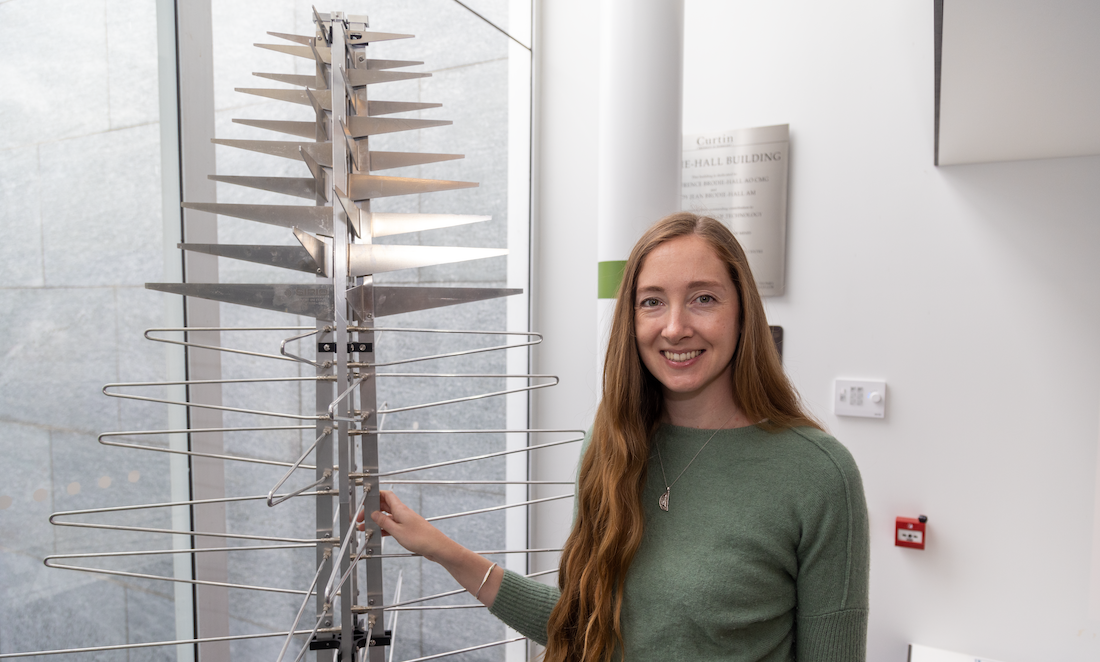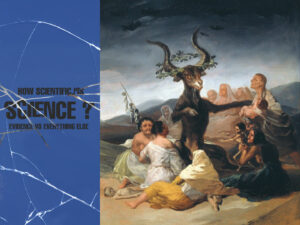When an unlucky star wanders into the path of a supermassive black hole, it results in one of the most violent events in the Universe.
Over a few days, the star is ripped apart and swept into a disc around the black hole.
They can be some of the brightest events we know of. The impacts can be observed years later.
“When these stars are destroyed, it releases a huge explosion of energy and light,” says astrophysicist Dr Adelle Goodwin.
“And we can catch what is happening in those inner regions of the galaxy and around the black hole as the black hole is devouring the star.”
Adelle is an expert on black holes who’s currently based at the Curtin University node of the International Centre for Radio Astronomy Research.
She also studies neutron stars – the dense remnants of stars that have run out of fuel gone supernova.
Last month, Adelle was named one of 60 Australian Superstars of STEM. Created in 2017, the program aims to smash the stereotypes around who can work in the field of science, technology, engineering and maths.
PASSION FOR SPACE
Adelle has always had a love and fascination for space.
“When I was 5, I actually wanted to be an astronaut,” she says. “Every project I could do at school, I did something space-related.”
Despite excelling at maths in high school, Adelle was encouraged to study biology, chemistry and literature.
But in her first year at uni, she studied astronomy and rediscovered her love of space.
OUT OF THIS WORLD
Today, Adelle works with telescopes in Australia, the US, Chile and India, among others.

Dr Adelle Goodwin looking through a telescope | Adelle Goodwin
For Adelle, one of the most exciting things about studying blackholes and neutron stars is that they are so different to anything we can imagine on Earth.
“The densities of neutron stars are beyond anything we could create in a laboratory on Earth,” she says.
“The physics that goes on inside of them is so extreme and just so incredible.
“If you took a teaspoon of neutron material and brought it to Earth, it would weigh 4 billion tonnes, which is around the same weight as Mount Everest.”
“And the neutron star isn’t even as extreme as a black hole.”
SUPERMASSIVE GIANTS
According to Adelle, one of the fundamental things we still don’t understand about supermassive black holes is how they get so big.
Scientists think black holes are formed by the death of stars, which are typically up to 100 times the size of our own Sun – or 100 ‘solar masses’.
“But supermassive black holes are billions of solar masses,” Adelle says.
“So how you go from something a hundred solar masses to a billion solar masses in the timeframe of the Universe is a huge unanswered question.
“We think that it may have something to do with black holes consuming material, for example, when they consume stars.
“In the early universe, it would have had to happen a lot in order for black holes to grow to the masses they are today.”
It’s something Adelle hopes to be able to discover in the future.
“With more-sensitive radio telescopes, we will be able to observe these sorts of events to further and further out – so to earlier and earlier in the universe – which may help us answer this,” she says.









